LIVE UPDATES: Fed Chair Jerome Powell to deliver major speech at Jackson Hole
Introduction & Market Context
Pacific Biosciences of California (NASDAQ:PACB) reported mixed first-quarter results on May 8, 2025, with total revenue of $37.2 million, slightly below the $38.8 million recorded in the same period last year. The genomic sequencing technology company faced headwinds from academic funding uncertainty and newly implemented tariffs between the U.S. and China, prompting a strategic restructuring and adjusted revenue guidance.
PacBio’s stock closed at $1.20 on the day of the earnings release, up 6.19% from the previous close, but traded down 2.5% in after-hours trading as investors digested the mixed results and lowered guidance.
Quarterly Performance Highlights
PacBio reported first-quarter product and service revenue of $37.2 million, with consumables showing strong growth while instrument sales declined significantly year-over-year. The company shipped 12 Revio systems and 28 Vega systems during the quarter, with approximately 50% of these placements going to new customers.
"We had a solid start to 2025, though we remain cautious given the macro environment, especially academic funding and trade policy," said Christian Henry, President and CEO of PacBio.
As shown in the following revenue breakdown, consumables were the bright spot in the quarter:
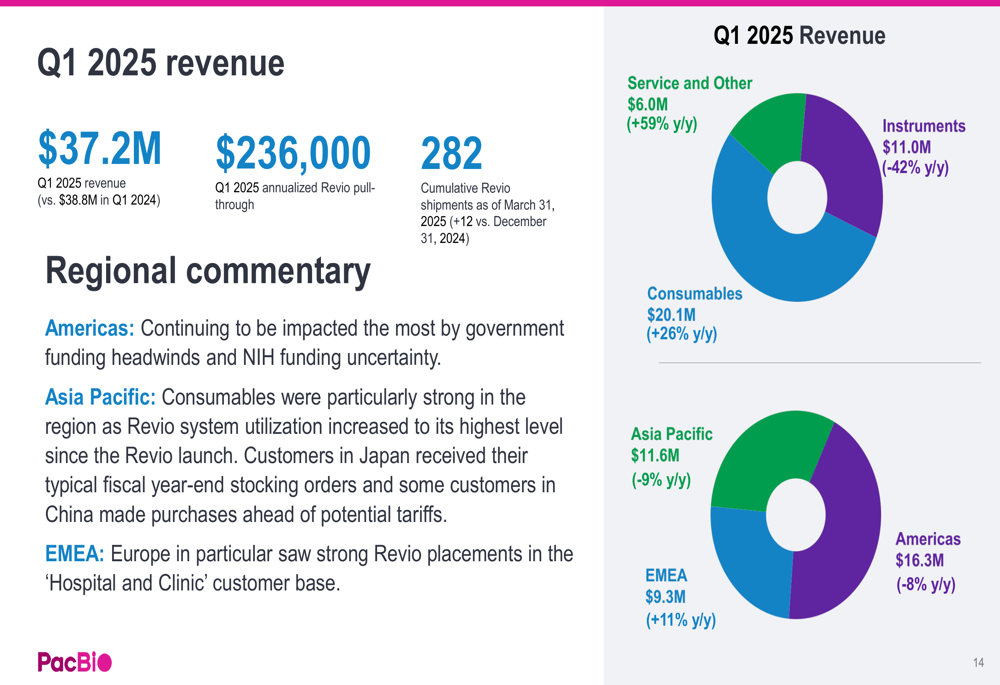
Consumable revenue grew 26% year-over-year to $20.1 million, while service and other revenue increased 59% to $6.0 million. However, instrument revenue declined 42% to $11.0 million compared to Q1 2024, which the company attributed to academic funding uncertainty.
The annualized Revio pull-through rate was $236,000 in Q1, slightly down from previous quarters but still indicating healthy utilization of installed systems. Cumulative Revio shipments reached 282 through Q1 2025, while the newer Vega system has reached 35 cumulative shipments since its launch.
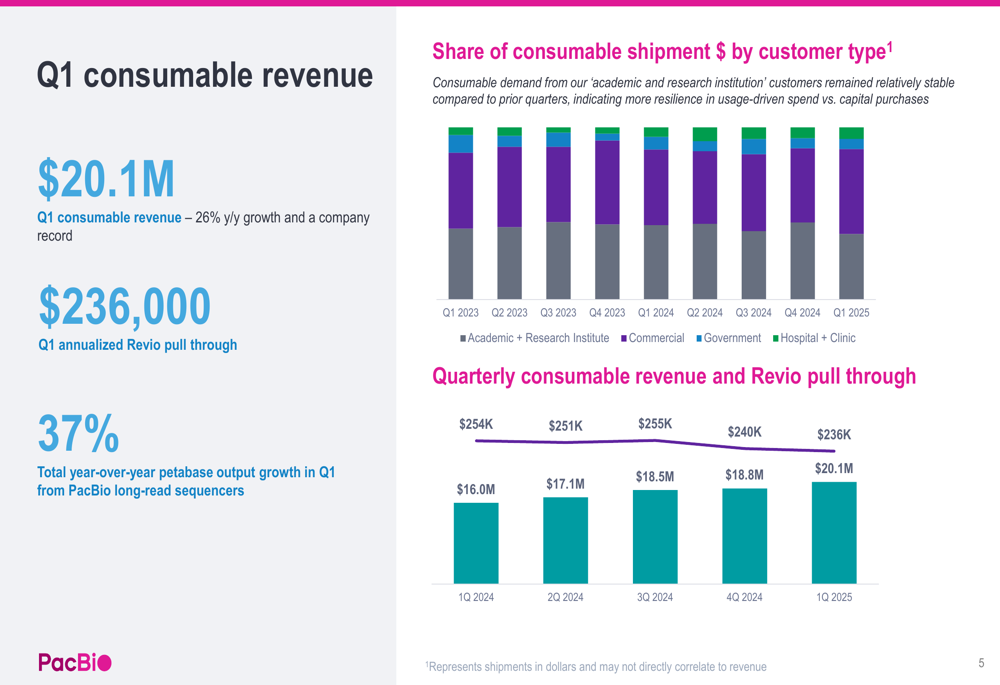
Regionally, EMEA showed 11% year-over-year growth, while the Americas and Asia Pacific regions declined by 8% and 9% respectively. The company noted that the Americas region was particularly impacted by government funding headwinds, while EMEA benefited from strong Revio placements in the hospital and clinical customer segment.
Strategic Initiatives
In April 2025, PacBio executed a restructuring plan expected to lower its annualized non-GAAP operating expense run-rate by $45 million to $50 million by year-end. The company is strategically shifting to prioritize long-read sequencing technology while pausing development of its high-throughput short-read sequencing platform.
"Our restructuring initiative aims to create a leaner, more focused organization," explained Henry. "We remain committed to selling the Onso platform and supporting existing customers, but our primary focus will be advancing our long-read technology."
A key product development highlighted in the presentation was the continued rollout of SPRQ chemistry, which significantly enhances the Revio platform’s data output and performance while reducing DNA input requirements:

Customer uptake of SPRQ chemistry has exceeded expectations, with nearly 90% of Revio reagent kit shipments in the first quarter utilizing this new chemistry. Dr. Pamela Nicholson was quoted in the presentation stating that with the new chemistry, they achieved 110Gb of data output instead of the previous 70-80Gb.
The company also reported encouraging customer response to its Vega system, with users consistently exceeding the specification of 60Gb of HiFi data per SMRT Cell:
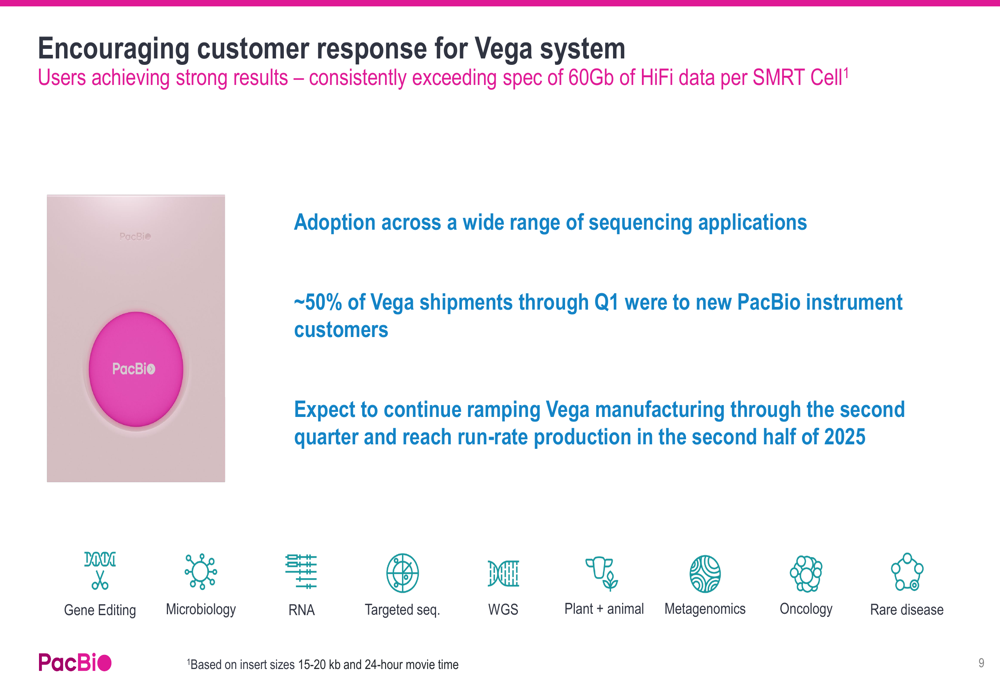
PacBio expects to continue ramping Vega manufacturing and reach run-rate production in the second half of 2025. The system is finding applications across various fields including gene editing, microbiology, RNA sequencing, and oncology research.
Financial Outlook
PacBio has adjusted its full-year 2025 revenue guidance to $150 million to $170 million, representing approximately 4% growth at the midpoint. This adjustment reflects incremental risks from newly implemented tariffs between the U.S. and China and proposed NIH budget reductions.
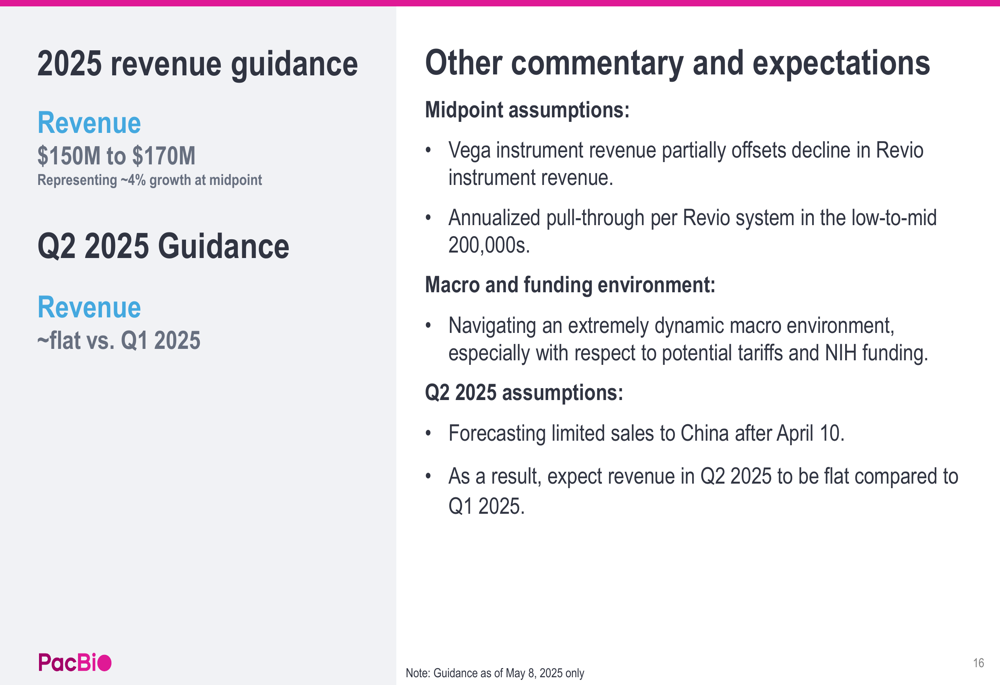
For Q2 2025, the company expects revenue to be flat compared to Q1, with limited sales to China after April 10 due to tariff impacts. The company’s key financial metrics for Q1 2025 showed:
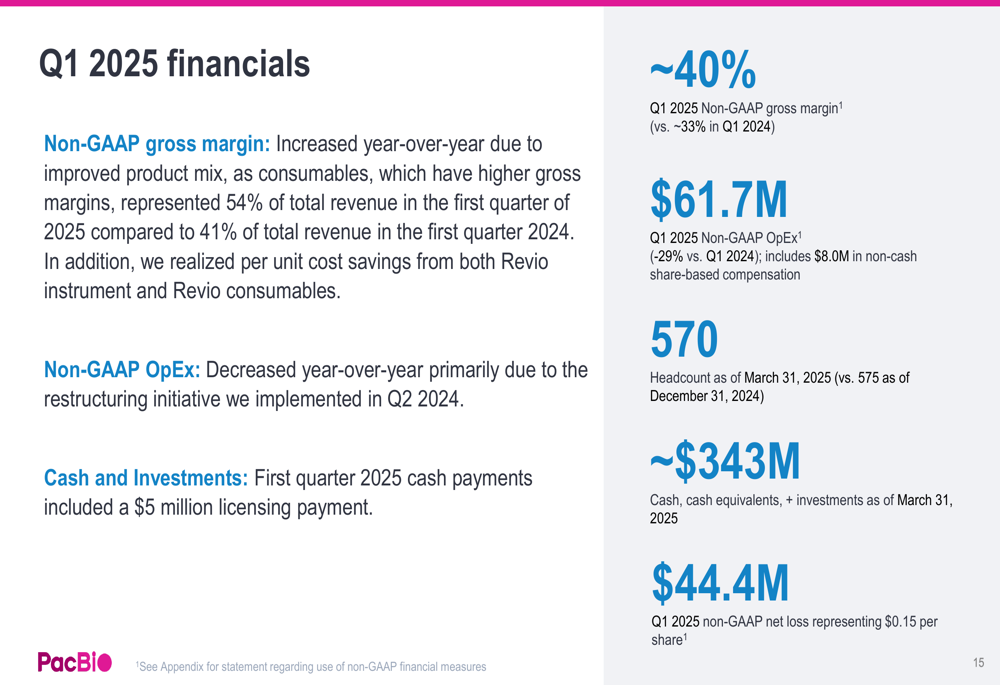
PacBio maintained approximately 40% non-GAAP gross margin in Q1 2025, with non-GAAP operating expenses of $61.7 million. The company ended the quarter with $343 million in cash, cash equivalents, and investments, and reported a non-GAAP net loss of $44.4 million.
For the full year 2025, PacBio provided the following financial guidance:
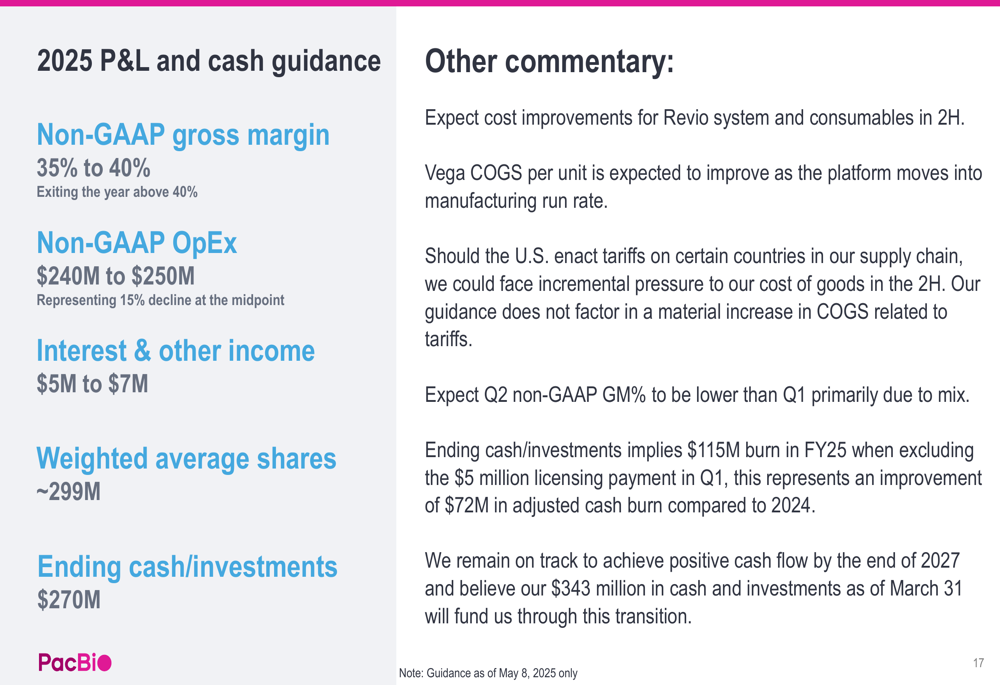
The company expects non-GAAP gross margin of 35% to 40% for the year, with non-GAAP operating expenses of $240 million to $250 million. PacBio anticipates ending 2025 with approximately $270 million in cash and investments.
Forward-Looking Statements
Despite near-term challenges, PacBio remains focused on its strategic priorities, which include enabling the full-scale release of Vega to broaden market reach, accelerating sample processing on the Revio platform via SPRQ chemistry and application kits, and investing in future long-read product updates and system launches.
The company also highlighted progress in its clinical strategy, with Revio placements at institutions like Lurie Children’s Hospital in Chicago, Imagine Institute in France, and the Institute of Medical (TASE:BLWV) Genetics at the University of Zurich. Additionally, PacBio announced a collaboration with Chulalongkorn University in Thailand to integrate PacBio HiFi whole genome sequencing into a national newborn screening research program.
PacBio remains committed to turning cash flow positive by the end of 2027, though this appears to be a later timeline than the end of 2026 target mentioned in previous communications. The company’s initial Net Promoter Score of greater than 50 from its annual customer survey suggests strong customer satisfaction despite the challenging market environment.
As PacBio navigates through funding uncertainties and trade tensions, its focus on consumable growth, clinical applications, and operational efficiency will be crucial for achieving its financial targets and returning to sustainable growth.
Full presentation:
This article was generated with the support of AI and reviewed by an editor. For more information see our T&C.
